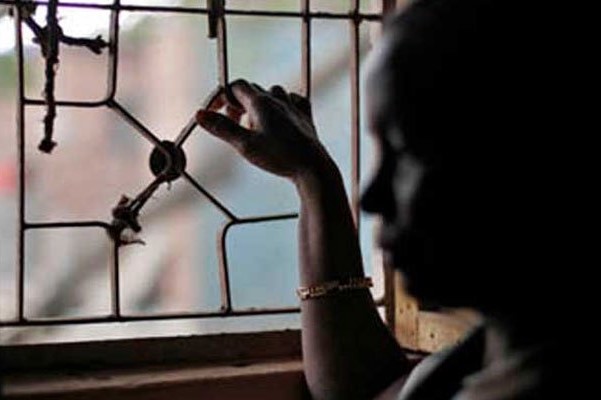Reuters photo
By
Jose Kalathil
According to Walk Free Foundation, a human rights organisation, India has the largest number of modern slaves in the world with more than 18 million trapped as bonded labourers, forced beggars, sex workers, and child soldiers.
This was revealed by the Foundation in its Global Survey Index, May 2016, clarifying that the number is 1.4% of India’s population, the fourth highest among 167 countries. The foundation has requested the Indian government frame a policy for private employers so that they can keep a check on bonded labour in their supply chain, an issue raised by Nobel laureate Kailash Satyarthi of Bachpan Bachao Andolan (Save Childhood Organisation). (India abolished bonded labour in 1976 but gangs continue to trap people from poor families with the promise of better jobs. Most of them are sold into domestic work and prostitution).
According to Jharkhand Chief Minister Raghubir Das, the state ranks the top among the affected with over 50,000 girls trafficked to other states. Of the total minors rescued from households across the country, 50% are from Jharkhand.
Ajit Kujur, chairperson of the Jharkhand State Commission for Protection of Child Rights (SCPCR), said the state government’s help desk will coordinate with Delhi Police to conduct operations in the nation’s capital. According to him, even after the girls have been rescued, middlemen get away scot-free due to lack of coordination. So, the Jharkhand government will prepare a database of all the girls from the state who are working in Delhi, which will help the government to track the victims. “There is no doubt that girls from Jharkhand are in demand in Delhi, and the step taken by SCPCR will help check the menace,” said Rishi Kant, an activist with the NGO, Shakti Vahini.
Five children are reported missing each day in the capital over the last five years, according to Delhi police records. Out of the 8,470 missing children, including 4,620 boys and 2,665 girls, around 1,800 are yet to be traced, 600 of which are girls.
“Not all rescued children end up at shelter homes. While the males are usually sold at eateries, farms and residences, girls are pushed into prostitution,” said a senior police official. Almost half the number of children (up to 12 years of age) who went missing in the past five years are below eight years old, and 830 of them — including 350 girls — are yet to be tracked. It is more difficult to track the eight-year-olds, who are extremely vulnerable, said the police.
The least developed districts in the state, Khunti, Gumla, Lohardaga and Godda, are the most vulnerable to trafficking. “Extreme poverty, lack of education and unemployment force parents to send their girls and small children to big cities in India,” sources said. Many families depend on farming for survival, but when there is a drought-like situation, they are forced to send their children with traffickers.
District Child Protection Officer (DCPO) of Ranchi, the capital of Jharkhand, Sewak Ram Lohra, finds illiteracy the main reason rural parents do not educate their children.
“I don’t think poverty is the main reason behind trafficking as many government schemes are reaching the villagers by which they can feed their family. It’s education which is needed,” said Mr Lohra. As many villagers feel that education cannot change their standard, they prefer to send their children with traffickers.
Government officials said even after working for several months or years, the trafficked children are not paid or their parents get money. “It is a startling fact that children are not safe in the hands of their relatives, many children are trafficked to various parts of India by their kin or acquaintances,” said a government official.
Due to illiteracy among villagers, there is no family planning. “Many villagers have more than three children and they have no means to feed them due to which they send their children with traffickers,” said an official.
In many cases, rescuers have found that when the parents are informed about the rescue of their children, they do not show much happiness. One of the parents told the rescuers that they had five children and it was difficult to feed all of them. That’s why they sent them with traffickers. A rescue worker said even the rescued children are in many cases sent back again for work.
A Child Welfare Committee (CWC) source in Jharkhand said that traffickers become rich in a short time. “Trafficking can’t be stopped in Jharkhand as no steps have been taken against those involved in it. Even after committing such a terrible crime, traffickers are freed from jail,” said the worker.
Meera Mishra, a CWC member in Ranchi, said after the harvesting period ends, the trafficking of girls increases as parents find it difficult to meet both ends. Traffickers then lure girls on the pretext of providing them jobs in the capital.
CWC data for July to September 2015 claimed that 141 children were rescued, which included 59 males and 82 females. Children aged 9-15 years are mostly trafficked to metropolitan cities or Haryana state as domestic labourers or for forced marriages.
The modus operandi of the traffickers is the same as the accused lure victims convincing their parents of jobs or marriage and in that pretext sell them to pimps for prostitution or illegal placement agencies for domestic work.
Most of the girls get trapped in this vicious cycle forever. Often illiterate, they have little knowledge of their rights and no clue of how to return home.



No Comments Yet!
You can be first to comment this post!